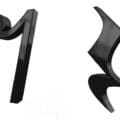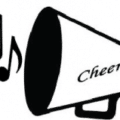Feb 26, 2013
The Invisibility of Music

Think about this. Music is invisible. Yes, it may be there as a background to visual images on television or the movie screen. And yes, music may cause you to conjure visions in your mind, but it is always delivered to your sound receptors (your ears!) in…invisible wave patterns.
This makes music distinct from painting, sculpture and photographic art. I occasionally remind my listening students that if they go to an art museum, they may gaze at a Monet painting for a few minutes or even a half hour. At any time during the process if they wish to look away, they may do so. The painting is not going anywhere. It is fixed on the wall of the museum. You can look back at it again whenever you wish that day – next week or next year!
But a movement of music by Beethoven or Bach is delivered to us in time – real time, one sound or group of sounds at a time and always invisibly. True, the composer has given us written shorthand for the music, the musical notation read by the performers which they translate into a musical performance. However, whether the performance is a live one we are attending or a recording being played back to us, it all happens in time. Of course, if we are controlling the playback we can stop and start it at will and achieve the museum painting’s “not going anywhere” attribute. But the intent of the composer is always to have a continuous, non-stop presentation of their musical ideas.
The invisible aspect of music is one that has always fascinated my mentor, Dr. Saul Feinberg – so much so that it spawned one of his important contributions to the teaching of music listening. Why not give listeners – especially new listeners – what he called a ‘picturization’ of the music? This question led him to create his ‘Blueprints for Musical Understanding’ which inspired my own ‘Listening Guides.’ These visual guides are a vehicle for making an invisible art form visible.
The guides contain a mixture of brief, numbered descriptions such as: “Trumpets enter loudly,” actual pictorial representations of instruments, musical symbols and tiny segments of musical notation. All of these numbered events can help the listener follow and ‘stay with’ the music as it invisibly progresses through real time. Often, after years of listening with full attention, one may well find that listening guides are no longer necessary. But many of the individuals that Saul taught, as well as the majority of students I have worked with, have said that they found listening guides to be really helpful.
If you never have before, why not give one a try! Treat yourself to Bach! Discovery Orchestra Chat 56 has one of Saul’s listening guides imbedded in this YouTube video.








